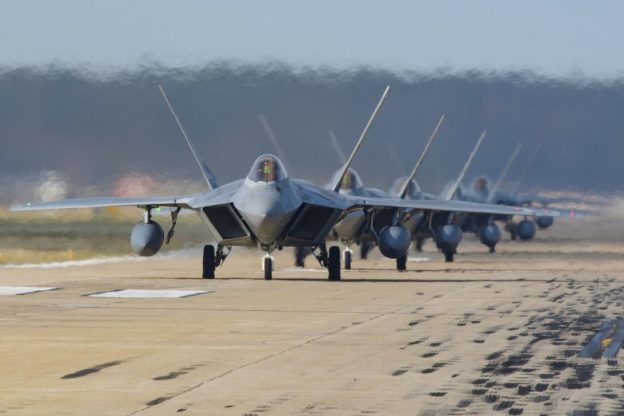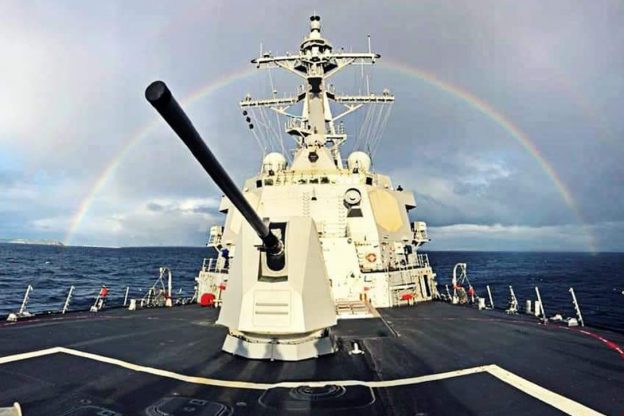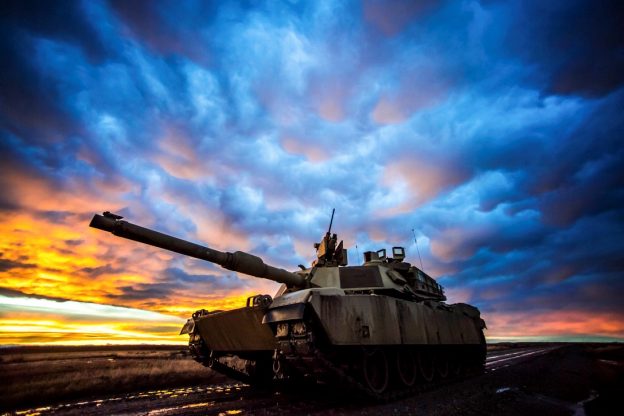The New York Analysis of Policy and Government concludes its review of Dakota Woods’ Heritage Foundation study on the ability of the U.S. military to meet the dangerous challenges ahead.
Threats to U.S. Interests
Our selection of threat actors discounted troublesome states and non-state entities that lacked the physical ability to pose a meaningful threat to vital U.S. security interests. This reduced the population of all potential threats to a half-dozen that possessed the means to threaten U.S. vital interests and exhibited a pattern of provocative behavior that should draw the focus of U.S. defense planning. This Index characterizes their behavior and military capabilities on five-point, descending scales.
All of the six threat actors selected—Russia, China, Iran, North Korea, and terrorist groups in the Middle East and Afghanistan—remained actual or potential threats to U.S. interests over the past year. All amply demonstrated a commitment to expanding their capabilities to pursue their respective interests that directly challenged those of the U.S.
Collectively, the threat to U.S. vital interests remains “high” in the 2019 Index despite a decrease in the assessed threat level for Af-Pak terrorism from “high” to “elevated.” Although this was the only full score change among the six threat actors, scores for both Russia and China come close to being elevated to “severe” from their current “high.”
Russia and China continue to be the most worrisome, both because of the ongoing modernization and expansion of their offensive military capabilities and because of the more enduring effect they are having within their respective regions. Russia has maintained its active involvement in the conflict in Ukraine, has been more assertive in the Baltic Sea region, and has reduced its presence in Syria— but only because of its success in salvaging the Bashar al-Assad regime. China’s provocative behavior continues to include militarization of islands that it has built in highly disputed international waters of the South China Sea. China also continues its aggressive naval tactics to intimidate such neighboring countries as Japan and the Philippines and continues to bully other countries that try to exercise their right to navigate international waters in the region.
North Korea maintains its nuclear arsenal, and past tests have hinted at the ability of North Korean missiles to reach targets in the United States. Although little demonstrated progress has been made on denuclearization, Kim Jong-un’s regime has decreased the frequency of its missile tests and toned down hostile rhetoric toward the West as it appears to pursue increased engagement with the current U.S. Administration.
Terrorism based in Afghanistan continues to challenge the stability of that country. To the extent that various groups based in the region straddling the border with Pakistan remain potent and active, they also remain a threat to the stability of Pakistan, which is a matter of concern given Pakistan’s status as a nuclear power and its sustained frictions with India, also a nuclear power. However, fatalities resulting from terrorist attacks within Pakistan have declined steadily and significantly since 2009.
In addition, Iran’s efforts to acquire more advanced military capabilities have been supported by increased cooperation with Russia. Iran’s growing military presence in Syria and active support of the various terrorist groups operating in the Middle East continue to undermine regional security conditions and therefore to threaten the regional interests of the U.S.
With these threats taken together, the globalized threat to U.S. vital national interests as a whole during 2018 remained “high.”
The Status of U.S. Military Power
Finally, we assessed the military power of the United States in three areas: capability, capacity, and readiness. We approached this assessment by military service as the clearest way to link military force size; modernization programs; unit readiness; and (in general terms) the functional combat power (land, sea, and air) represented by each service. We treated the United States’ nuclear capability as a separate entity given its truly unique characteristics and constituent elements, from the weapons themselves to the supporting infrastructure that is fundamentally different from the infrastructure that supports conventional capabilities.
These three areas of assessment (capability, capacity, and readiness) are central to the overarching questions of whether the U.S. has a sufficient quantity of appropriately modern military power and whether military units are able to conduct military operations on demand and effectively.
the common theme across the services and the U.S. nuclear enterprise is one of force degradation resulting from many years of underinvestment, poor execution of modernization programs, and the negative effects of budget sequestration (cuts in funding) on readiness and capacity in spite of the limited and temporary relief from low budget ceilings imposed by the Budget Control Act of 2011. While the military has been heavily engaged in operations, primarily in the Middle East but elsewhere as well, since September 11, 2001, experience is both ephemeral and context-sensitive. Valuable combat experience is lost as the servicemembers who individually gained experience leave the force, and it maintains direct relevance only for future operations of a similar type: Counterinsurgency operations in Iraq, for example, are fundamentally different from major conventional operations against a state like Iran or China.
Thus, although the current Joint Force is experienced in some types of operations, it lacks experience with high-end, major combat operations toward which it has only begun to redirect its training and planning, and it is still aged and shrinking in its capacity for operations We characterized the services and the nuclear enterprise on a five-category scale ranging from “very weak” to “very strong,” benchmarked against criteria elaborated in the full report. These characterizations should not be construed as reflecting the competence of individual servicemembers or the professionalism of the services or Joint Force as a whole; nor do they speak to the U.S. military’s strength relative to other militaries around the world. Rather, they are assessments of the institutional, programmatic, and material health or viability of America’s hard military power.
Our analysis concluded with these assessments:
- Army as “Marginal.” The Army’s score rose from “weak” to “marginal” due to an increased number of ready brigade combat teams. The Army has constrained end strength and modernization to improve readiness. However, accepting risks in these areas has enabled the Army to keep roughly half of its force at acceptable levels of readiness. The Army now relies more consistently on its Army National Guard component to reinforce its ability to respond to crises. While the increased funding for training and readiness is good both for the Guard and for the Total Army, it does reveal shortfalls in the Active Army
- Navy as “Marginal.” The Navy’s overall score for the 2019 Index is “marginal,” the same as in the 2018 Index. The Navy’s emphasis on restoring readiness and increasing its capacity, enabled by increased funding in 2017 and 2018, signals that its overall score could improve in the near future if needed levels of funding are sustained. However, budget instability resulting from continuing resolutions and a return to Budget Control Act limits will negate these improvements and cause future degradation in the Navy’s score. While maintaining a global presence (slightly more than one-third of the fleet is deployed on any given day), the Navy has little ability to surge to meet wartime demands. The Navy’s decision to defer maintenance has kept ships at sea but also has affected its ability to deploy. The Navy remained just able to meet operational requirements in 2018. Continuing budget shortfalls in its shipbuilding account will hinder the ability of the service to improve its situation, both materially and quantitatively, for the next several years— an even larger problem considering that the Navy has revised its assessment of how many ships it needs to 355, which is much less than the 400 ships called for in this Index.
- Air Force as “Marginal.” The Air Force is scored as “marginal” overall. This score has trended downward over the past few years largely because of a drop in “capacity” that has not effectively changed and a readiness score of “weak.” The shortage of pilots and flying time for those pilots degrades the ability of the Air Force to generate the amount and quality of combat air power that would be needed to meet wartime requirements. Although the Air Force could eventually win a single major regional contingency in any theater, the attrition rates would be significantly higher than those sustained by a ready, well-trained force.
- Marine Corps as “Weak.” The Corps continues to deal with readiness challenges driven by the combination of high operational tempo and the lingering effects of procurement delays. Aviation remained one of the largest challenges for the Corps in 2018, driven by high demand for Marine Air-Ground Task Forces and sustainment challenges within its legacy fleet of aircraft, and the Corps has cited modernization of its aviation platforms as the single most effective means to increase readiness within the service. Select units and platforms have seen mild readiness improvements as a result of increased funding for spare parts and maintenance requirements. However, Marine operating forces as a whole continue to average a two-to-one deployment-to-dwell ratio. At this pace, readiness is consumed as quickly as it is built, leaving minimal flexibility to respond to contingencies. Although increased funding for readiness and an emphasis on modernization give strong support to the Corps’ readiness recovery efforts, the effects will take time to materialize. The combination of capacity shortfalls and the lack of a “ready bench” maintains the Marine Corps’ overall strength score of “weak.”
- Nuclear Capabilities as “Marginal.” The U.S. nuclear complex is “trending toward strong,” but this assumes that the U.S. maintains its commitment to modernization and allocates needed resources accordingly. Without this commitment, this overall score will degrade rapidly to “weak.” Continued attention to this mission is therefore critical. Although a bipartisan commitment has led to continued progress on U.S. nuclear forces modernization and warhead sustainment, these programs remain threatened by potential future fiscal uncertainties. The infrastructure that supports nuclear programs is aged, and nuclear test readiness has revealed troubling problems within the forces. Additionally, the United States has conducted fewer tests of launch vehicles than in previous years. On the plus side, the 2018 Nuclear Posture Review articulates nuclear weapons policy grounded in realities of international developments and clearly articulates commitment to extended deterrence. The commitment to warhead life-extension programs, the exercise of skills that are critical for the development of new nuclear warheads, and the modernization of nuclear delivery platforms represent a positive trend that should be maintained. Averaging the subscores across the nuclear enterprise in light of our concerns about the future results in an overall score of “marginal.”
Photo: U.S. Department of defense


